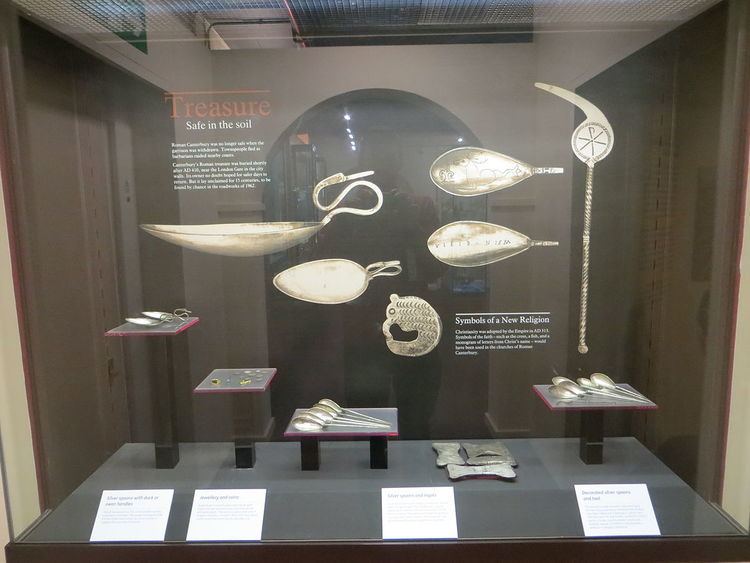Material Silver Discovered 1962 | ||
 | ||
Created Late 4th or early 5th Century AD Present location Roman Museum, Canterbury | ||
The Canterbury Treasure is an important late Roman silver hoard found in the city of Canterbury, Kent, south-east England in 1962, and now in the Roman Museum, Canterbury, Kent. Copies of the main items are also kept in the British Museum.
Contents
Discovery
The hoard was discovered during road works in the Longmarket area of the city in 1962. Declared treasure trove, it was bought by the city council to be displayed at the Roman Museum which had been established the year before. However five objects appeared on the London antiquities market in 1982 that were originally part of the treasure but had not been declared at the time of its discovery. They were again declared as treasure trove and purchased a year later. The Canterbury Treasure was probably buried in the early 5th century AD, when the Romans were withdrawing their garrisons from Britain. The owner of the treasure, who may have been a silversmith, buried it for safe-keeping, only to never reclaim it.
Description
The treasure is mostly composed of small silver objects and jewellery. Many of the artefacts have Christian iconography on them. The silver objects include two spoons with swan-shaped handles, ten spoons (one engraved with a sea stag, another with the words in Latin 'viribonum'-'I belong to a good man'), a toothpick, a rough bar and three ingots which each weigh one Roman pound. The jewellery include a gold finger ring with an inset green glass stone, a gold necklace clasp and a silver pin. One of the coins in the treasure was minted at Milan in the time of Emperor Honorius which means the hoard must have been buried sometime after 402 AD.
